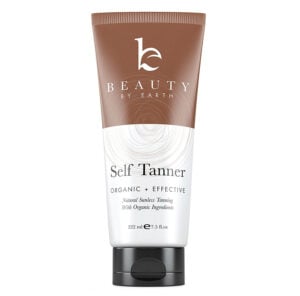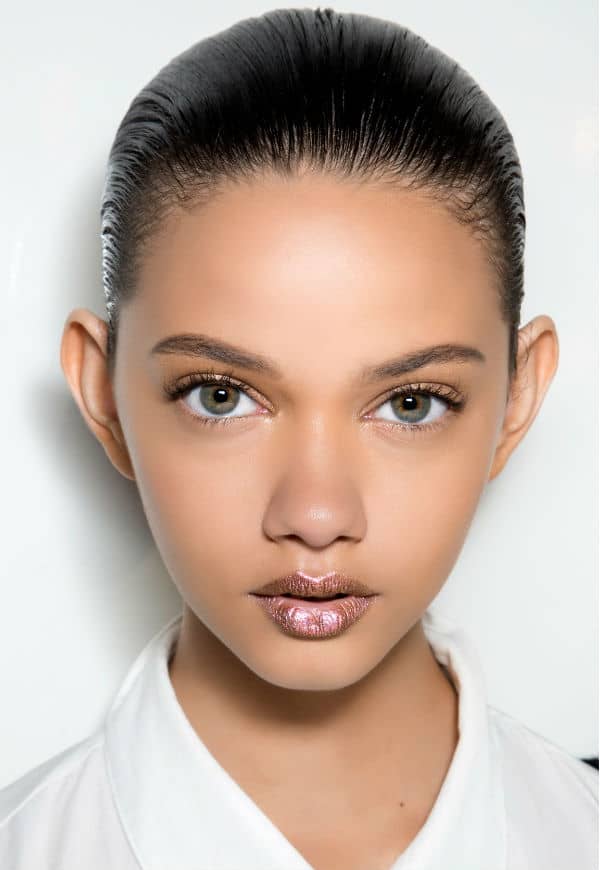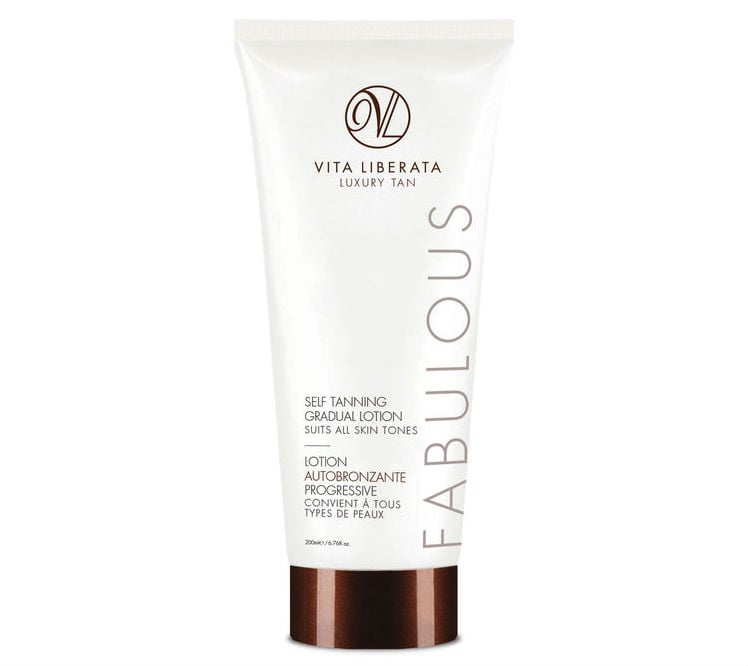Unlike so many things beauty-related, the sun-kissed look will never go out of style. Everyone looks better when they have a healthy, radiant tan. But the question remains… to bake, or not to bake?
Tanning beds are out. We all know the damage that twice-per-week visits to the tanning salon can have on our skin. The sun itself is no better. Not only do the UV rays emitted by the sun have damaging effects on our skin in the short term (i.e. sunburns), but in the long term they can cause discoloration, hyperpigmentation and melisma.
Then what are we to do? Many former sun-worshipers have turned to self-tanner to get the glow they’re after. Alas, some of the ingredients in conventional self-tanners are just as harmful to our bodies, if not even more so. If that’s not a reason to go natural or organic with your self-tanner than we don’t know what is.
BEST NATURAL AND ORGANIC SELF-TANNERS
If you’re avoiding the sun to protect your health, you should also be avoiding the irritating and sometimes toxic ingredients that are contained in self-tanners. A clean, natural and organic self-tanner offer you the same glow and radiance as conventional ones, without introducing toxicity to the largest organ of your body – your skin. Below find the best of clean, organic & natural self tanners:
Maya Chia Water I Color Serum Self Tanner $65
Maya Chia’s fan-favorite WATER | COLOR™ Tinted Super Antioxidant Hydration + Gradual Sunless Tanner not only provides a deep level of hydration for the skin but also imparts a healthy, gradual tan for a radiant complexion. Infused with potent antioxidants like Chebula and Astaxanthin, it also fights signs of aging and inflammation. Formulated with Cosmos/Ecocert-approved DHA and erythrulose, it ensures a streak-free, natural-looking tan without sun damage. Plus, it shields against environmental pollutants and blue light, making it a must-have for radiant, protected skin.
 Eco Tan Invisible Tan $44
Eco Tan Invisible Tan $44
Cerfied organic, ECO tan is a name you can trust to deliver your tan using only certified natural and organic ingredients. Suitable for application on the sensitive skin of your face as well as your whole body, this award-winning self-tanner helps achieve a natural-looking tan for those looking for medium level results. It’s full of soothing ingredients like chamomile, nourishing plant-based oils from the likes of avocado and macadamia as well as antioxidant-rich planted based extracts including elderberry which will protect your skin long after you’ve used it.
ECO Tan also offers a variation of their organic self tanner in a liquid form Face Tan Water ($31.95), if you’re a fan of a lighter formula.
 Beauty By Earth Organic Self Tanner $28.99
Beauty By Earth Organic Self Tanner $28.99
Create the perfect medium to dark tan with this buildable sunless tanning lotion that doesn’t just give you the sun-kissed glow you’re looking for, but works to nourish and hydrate your skin at the same time. Keeping your skin moisturized is the key to maintaining your tan and with organic ingredients like shea butter, coconut seed oil, and jojoba oil, you’re skin’s thirst will be more than quenched. You’ll notice your new tan within six hours of application and it’s so natural you can remove any “oopsie” stains with a bit of lemon!
VIta Liberata Fabolous Gradual Tanning Lotion $30
If you’re anything like us – that is, a little clumsy – then look no further! Self-tanning lotions can get messy and that means stains on clothing and on the area in which you’re working. But Vita’s sunless tanning lotion applies clear so you don’t have to worry about any transfer onto your clothes! All good things are worth waiting for and the (very short) wait for this clear lotion to gradually develop into a natural, soft glow is worth every minute. Plus it’s full of certified organic botanicals that are gentle enough for dry and sensitive skin types.
 Suntegrity 5 In 1 Natural Self Tanner $40
Suntegrity 5 In 1 Natural Self Tanner $40
The active ingredient in Suntegrity’s natural self-tanner made for Fair to Light skin tone is an Eco-certified DHA that’s made from.. wait for it….beets! Who knew that one of our fave veggies could also help give us the sun-kissed tan we’ve been craving? Not only that, but beets are a powerful antioxidant that will protect your skin from free radicals. It’s lovely, summer fragrance comes from natural coconut and it’s jam-packed with botanical extracts like goji and acai, hydrating oils and, the most skin-beneficial of all, vitamin E.
Alternatively Suntegrity’s Island Tan Gradual Self Tan Drops ($48), works for all skin tones and is made to be added to your favorite moisturizer or cream work.
 Chocolate Sun Illuminate Tanning Gel $42
Chocolate Sun Illuminate Tanning Gel $42
WHY CHOOSE NATURAL AND ORGANIC SELF-TANNERS
According to some health authorities, using self-tanners is less invasive and problematic than exposing your skin to the sun for long periods of time. We wonder if that takes into consideration some of the potentially harmful and toxic ingredients that you can find in your typical, unnatural and non-organic lotions.
We had a look through some conventional self-tanners and what we found might surprise you. Below are some common ingredients found in self-tanners and why they mightn’t be a healthy option for lathering on your skin:
MINERAL OIL
This ingredient is derived from petroleum (i.e. a fossil fuel) and it’s an inexpensive way to create the effect of hydration. At best, petroleum doesn’t allow your pores to breath or behave naturally. At its worst, it can be carcinogenic.
SODIUM HYDROXYMETHYL GLYCINATE
This is often guised under the term “natural preservative”. Let’s remember that not all things natural are good for us (arsenic is natural, for example). In high concentrations, sodium hydroxymethyl glycinate can be irritating to the skin and to the eyes. Sometimes it can contain formaldehyde, which permeates the skin and is toxic to your body.
PARABENS
How are these still allowed in our skincare products? This preservative is the most commonly found preservative in cosmetics and skincare but it’s a proven endocrine disruptor. Credit where credit is due, though: more and more brands are starting to avoid parabens because of all the negative press (and rightfully so).
AMYL ACETATE
They use this stuff in the dry cleaning business. Anything that can clear deep stains faster than you can say “go”, is not something you want to be putting on your skin.
OCTYL STEARATE
More-often-than-not, this item is a skin irritant that is also comedogenic (i.e. it blocks pores, doesn’t allow them to breathe naturally, and causes breakouts).
ISOPROPYL MYRISTATE
There is some evidence that this substance can bind to nitrates already present in the body. The short of it is: nitrates are carcinogenic.
ARTIFICIAL FRAGRANCES AND COLORS
Found in all kinds of cosmetics and skincare products, fragrances and color additives contain a host of ingredients that are potentially harmful and toxic. Brands don’t have to disclose what goes into the process of creating fragrance or color, so we can’t really know what’s in them. But what we do know is that many fragrances used in self-tanners are derived from various petrochemicals, which can be carcinogenic.
OXYBENZONE
This is a chemical sunscreen that is used in some self-tanners to help your skin absorb the lotion. Makes sense for a self-tanner to contain something like this, right? Sure.. but that doesn’t make it safe. Studies have shown that this ingredient might promote the growth of cancer and has been connected to developmental and reproductive problems.
THE SAFE SIDE OF SELF-TANNER INGREDIENTS – DHA
When scanning the ingredients label of a self-tanner you will come across a chemical called dihydroxyacetone (or DHA). DHA is what causes your skin to turn brown when you apply a self-tanner – it combines with the already present amino acids in your skin and the reaction is what results in browning.
What’s important here, in terms of your health, is that this reaction only takes place on the “stratum corneum”, which is the topmost layer of your dermis. This layer is comprised by dead skin cells and that’s the only part of your body that DHA effects. Studies haven’t found any evidence to suggest that DHA penetrates your skin any further than that. So, don’t worry about finding this chemical in your sunless tanner.
FINAL THOUGHTS
If your someone who loves the look of tanned skin but you’re also aware of how damaging the sun can be, then you might consider self-tanners. But protecting your skin while giving it a youthful glow isn’t as easy as picking up the first self-tanner you see. In the long term, the ingredients in conventional sunless tanners can be just as harmful and toxic to your body as the sun. Luckily, the natural and organic movements that are changing everything from what we eat to what we put on our skin have infiltrated the self-tanning market. You can now achieve that desired radiance without harming your body and, instead, providing it with the nourishment it needs.





